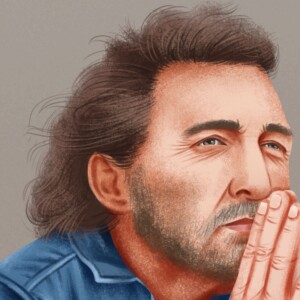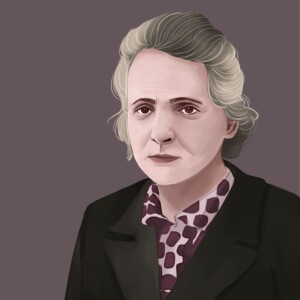Episodes

Thursday Oct 19, 2023
Thursday Oct 19, 2023
Chapter 1:What is The Information book about
"The Information" by James Gleick is a non-fiction book that explores the history, science, and impact of information throughout human existence. It dives into the concept of information as a fundamental element of existence, from its role in the development of writing systems and language to the modern-day digital age. The book discusses various historical figures such as Claude Shannon, who laid the foundation for modern information theory, and key concepts like data compression, cryptography, and the influence of information on biology and genetics. "The Information" investigates how information shapes our understanding of the world, influences communication, and transforms society.
Chapter 2:Author of The Information book
James Gleick is an American author, journalist, and biographer known for his works on science and technology. He was born on August 1, 1954, in New York City. Gleick graduated from Harvard College in 1976 with a degree in English and began his career as a journalist, working for The New York Times from 1977 to 1986.
Gleick gained prominence in 1987 with the release of his first book, "Chaos: Making a New Science," which explored the field of chaos theory and its impact on various disciplines. The book received critical acclaim and became an international bestseller, establishing Gleick as a leading science writer.
In 1992, Gleick published "Genius: The Life and Science of Richard Feynman," a biography of the renowned physicist Richard Feynman. This book further showcased Gleick's ability to delve into the personal and intellectual lives of prominent figures within the scientific community.
One of Gleick's most influential works is "The Information: A History, a Theory, a Flood," published in 2011. This book examines the history and impact of information and its transmission, covering topics ranging from the invention of writing to the creation of the internet. "The Information" explores how information shapes and molds society, and it received widespread praise for its insightful exploration of a fundamental aspect of human existence.
Throughout his career, Gleick has consistently blended scientific concepts with compelling storytelling, making complex ideas accessible to a general audience. He has written for numerous publications, including The New York Times Magazine, The Guardian, and The Atlantic. Gleick has been a recipient of numerous awards, including the National Book Award and the PEN/E. O. Wilson Literary Science Writing Award.
James Gleick's works continue to illuminate and captivate readers, providing a deep understanding of complex scientific and technological concepts while engaging them with fascinating narratives.
Chapter 3:why is The Information book worth reading
The Information by James Gleick is worth reading for several reasons:
Comprehensive exploration: The book provides an in-depth survey of the concept of information, covering its historical, scientific, and philosophical aspects. It delves into the origins and evolution of information, exploring how it shapes our understanding of the world and influences various fields such as mathematics, physics, biology, and communication.
Engaging writing style: James Gleick presents complex ideas in a clear and accessible manner, making the book enjoyable for both experts and readers with limited knowledge about information theory. He combines scientific rigor with engaging storytelling, making it a captivating read.
Thought-provoking insights: The book challenges readers to think deeply about fundamental questions regarding the nature of information, its role in human society, and its impact on our lives. It prompts introspection about how we gather, process, and utilize information, and encourages critical thinking about the digital age and the constant influx of data.
Historical context: Gleick situates the concept of information within its historical context, tracing its development from ancient times to the modern digital era. This historical perspective helps readers understand how information has evolved and shaped human civilization, and how it continues to do so.
Interdisciplinary approach: The Information draws from various disciplines such as mathematics, computer science, biology, linguistics, and philosophy, creating a holistic view of the subject. This multidisciplinary approach provides a rich and diverse understanding of information that goes beyond narrow disciplinary boundaries.
Overall, The Information by James Gleick offers a fascinating exploration of a ubiquitous yet often overlooked concept, providing valuable insights and knowledge for anyone interested in understanding the world of information that surrounds us.
Chapter 4: Books like The Information book
"The Code Book: The Science of Secrecy from Ancient Egypt to Quantum Cryptography" by Simon Singh
"The Emperor's New Mind: Concerning Computers, Minds, and the Laws of Physics" by Roger Penrose
"Algorithms to Live By: The Computer Science of Human Decisions" by Brian Christian and Tom Griffiths
"The Innovators: How a Group of Hackers, Geniuses, and Geeks Created the Digital Revolution" by Walter Isaacson
"The Glass Cage: Automation and Us" by Nicholas Carr
"The Big Switch: Rewiring the World, from Edison to Google" by Nicholas Carr
"The Victorian Internet: The Remarkable Story of the Telegraph and the Nineteenth Century's On-line Pioneers" by Tom Standage
"The Internet: A Philosophical Inquiry" by Gordon Graham
"The Singularity Is Near: When Humans Transcend Biology" by Ray Kurzweil
"The Shallows: What the Internet Is Doing to Our Brains" by Nicholas Carr

Thursday Oct 19, 2023
Thursday Oct 19, 2023
Chapter 1:Summary of The Halo Effect
The Halo Effect by Phil Rosenzweig is a book that challenges the idea that successful companies or individuals have a set of universally applicable principles that led to their success. Rosenzweig argues that there is a tendency to use hindsight bias and simplify complex situations to make sense of success and failure.
The book begins by addressing the Halo Effect, which refers to the tendency to attribute positive qualities to a person or entity based on one positive characteristic or success. Rosenzweig argues that this leads to a flawed understanding of what truly caused success. He emphasizes that success is often a result of various factors and cannot be attributed to a single cause.
Rosenzweig then provides numerous examples to demonstrate how the Halo Effect distorts our understanding of success in business. He explores different case studies, such as the rise and fall of companies like Enron and ABB, and shows how people tend to attribute their success to specific management practices without taking into account other external factors.
The author also challenges the notion of the "great leader" theory, arguing that individual leaders are often overemphasized and given credit for success that is actually driven by a combination of factors, including industry trends, market conditions, and team dynamics.
Rosenzweig proposes a more balanced approach to understanding success and failure, suggesting that it is crucial to consider multiple factors and analyze them in context rather than relying on simplistic explanations. He encourages readers to question popular business theories and to be wary of oversimplified success stories.
In conclusion, The Halo Effect offers a critical perspective on our tendency to simplify success and failure. Rosenzweig emphasizes the need for a more nuanced understanding, urging readers to question prevailing wisdom and consider the complexity of real-world situations when analyzing business success or failure.
Chapter 2:The meaning of The Halo Effect
The Halo Effect, written by Phil Rosenzweig, is a book that challenges the validity of popular management theories and highlights the dangers of making judgments based on limited information. The term "halo effect" refers to the cognitive bias where one positive trait or characteristic of a person or entity influences our overall perception of them, leading us to attribute other positive traits to them as well, even if those traits may not be warranted.
Rosenzweig argues that the halo effect is pervasive in business and particularly affects management practices and decision-making. He suggests that managers often rely on superficial indicators of success, such as high profits or a charismatic leader, to make judgments about the effectiveness and potential of a company. This can lead to overconfidence, misallocation of resources, and flawed decision-making.
The author delves into research studies and real-world examples to debunk the commonly held assumptions and myths about management, such as the belief that successful companies have a clear and consistent strategy, or that a highly praised CEO is responsible for the company's success. He emphasizes the importance of considering multiple factors and being aware of our biases when evaluating business performance and making decisions.
Overall, The Halo Effect challenges readers to think critically about popular management theories and urges them to seek a more nuanced understanding of business success and failure. It emphasizes the need to look beyond surface-level indicators and consider a broader range of factors when evaluating companies and making managerial decisions.
Chapter 3:The Halo Effect chapters
Chapter 1: The Illusion of Success
In this chapter, Rosenzweig introduces the concept of the Halo Effect, which refers to the tendency to make broad judgments about a company or its leaders based on a single success or failure. He argues that this simplistic thinking overlooks important factors that contribute to success or failure and leads to poor decision-making.
Chapter 2: The Delusion of Correlation and Causality
Rosenzweig highlights the errors in assuming causality based on correlation in evaluating business performance. He argues that many factors operate simultaneously and influence success, making it difficult to determine a single cause. He emphasizes the importance of considering multiple factors in understanding success.
Chapter 3: The Fiction of the Single Measure
In this chapter, Rosenzweig challenges the idea that a single measure, such as profitability or stock price, can accurately capture the performance of a company. He explains that businesses are complex and multifaceted, making it necessary to consider a range of measures to assess performance accurately.
Chapter 4: The Halo Effect and Halo in Reverse
Rosenzweig explores how the Halo Effect can lead to biased judgments in favor of successful companies and against struggling ones. He explains how this bias can result in misallocation of resources, as companies with a positive halo receive more support and attention, while those with a reverse halo struggle to regain credibility.
Chapter 5: What Great Companies Do
Here, Rosenzweig criticizes the popular notion that there is a set of universal characteristics shared by successful companies. He argues that it is more accurate to say that successful companies adapt their strategies to fit their unique circumstances, rather than adhering to a predefined set of best practices.
Chapter 6: What Great Leaders Do
Rosenzweig delves into the myth of the "great leader" and argues against the idea that individual leaders are solely responsible for the success or failure of a company. He emphasizes the importance of collective decision-making and the role of a supportive and effective team.
Chapter 7: Drilling Down
This chapter examines the concept of competitive advantage and challenges the idea that companies can sustain long-term advantages over their competitors. Rosenzweig argues that competitors can easily imitate successful strategies, making sustained competitive advantage rare and difficult to achieve.
Chapter 8: Where is the Proof?
Rosenzweig questions the lack of rigorous scientific evidence for many management theories and practices. He argues that evidence-based management, where decisions are informed by scientific research, can lead to better outcomes and urges managers to critically evaluate popular management theories.
Chapter 9: The Problem of More Data
In the final chapter, Rosenzweig discusses the dangers of relying solely on data in decision-making. He highlights the importance of human judgment and critical thinking in interpreting and making sense of data, cautioning against blindly following data-driven decisions without considering the bigger picture.
Chapter 4: Quotes of The Halo Effect
"The halo effect is the tendency to assume that because people are good at doing one thing, they will be good at doing everything."
"The attractiveness of a good story can lead us to put too much faith in the storyteller."
"The halo effect operates in part because of the natural human tendency to seek out and interpret information in ways that confirm our preconceived notions."
"We need to be cautious in believing that success in one area always leads to success in another."
"The halo effect can blind us to the real reasons behind success or failure, leaving us vulnerable to making incorrect judgments and decisions."
"Attributing success solely to individual talent and effort can overlook important environmental factors that contribute to achievement."
"The halo effect can lead to an overemphasis on personality traits, rather than considering the role of luck or circumstance in determining outcomes."
"Ignoring the halo effect requires a conscious effort to overcome cognitive biases and adopt a more nuanced perspective."
"Relying on the halo effect can lead organizations to overlook potentially talented individuals who don't fit the preconceived notions of success."
"Recognizing and understanding the halo effect is crucial for making accurate judgments and decisions in business and everyday life."

Wednesday Oct 18, 2023
Wednesday Oct 18, 2023
Chapter 1:what is the Nonviolent Communication about
Nonviolent Communication: A Language of Life, written by Marshall B. Rosenberg, is a book that outlines a communication process aiming to foster empathy, compassion, and understanding. The book introduces a framework for effective and nonviolent communication, promoting connection and conflict resolution in personal and professional relationships.
The main premise of Nonviolent Communication (NVC) is that conflicts arise from unmet needs, and that expressing these needs while empathetically listening to others can lead to mutual understanding and peaceful resolutions. Rosenberg introduces four components of NVC:
Observation: Learning to observe the situation objectively without judgment, avoiding evaluation or interpretation.
Feeling: Identifying and acknowledging specific feelings experienced during certain situations, instead of relying on vague or general descriptions.
Need: Understanding what specific needs or values underlie the emotions being felt.
Request: Communicating a clear and actionable request that addresses the needs.
Rosenberg emphasizes the importance of compassionate listening, empathy, and learning to express oneself in a non-blaming and non-judgmental manner. The book also explores the idea of transforming habitual patterns of thinking, identifying and managing anger, and using NVC as a means to bring about social change.
Overall, Nonviolent Communication provides practical techniques and real-life examples to guide readers in developing more effective and empathetic communication skills, fostering understanding, and building harmonious relationships.
Chapter 2:Author of the Nonviolent Communication
Marshall Rosenberg (1934-2015) was an American author, psychologist, and founder of Nonviolent Communication (NVC). Born in a Jewish family, Rosenberg was deeply affected by growing up in racially segregated neighborhoods. These experiences shaped his lifelong commitment to promoting peace and resolving conflicts.
Rosenberg's primary contribution to the field of communication was the development of Nonviolent Communication, also known as Compassionate Communication. He believed that conflicts arise from a lack of effective communication, and therefore developed a process that aims to foster understanding, empathy, and connection between individuals.
Nonviolent Communication is based on the principles of empathy, self-expression, and fostering relationships built on compassion and understanding. This approach encourages people to communicate their needs and feelings without resorting to violence, judgment, or manipulation.
Throughout his career, Rosenberg conducted training workshops and seminars worldwide, teaching people how to apply the principles of Nonviolent Communication in their personal and professional lives. He worked with diverse groups such as international peacekeepers, educators, parents, couples, and professionals in conflict-ridden environments.
In addition to his work as a mediator and educator, Rosenberg authored several books, including the influential book "Nonviolent Communication: A Language of Life." These publications have been translated into multiple languages, contributing to the worldwide recognition and adoption of his communication techniques.
Marshall Rosenberg's dedication to spreading the message of Nonviolent Communication made him a prominent figure in the field of conflict resolution. His impact continues to be felt, as many individuals and organizations around the world practice and promote his teachings for building harmonious relationships and resolving conflicts peacefully.
Chapter 3:why is the Nonviolent Communication worth reading
Nonviolent Communication by Marshall Rosenberg is worth reading for several reasons:
Improved communication skills: The book provides practical techniques and strategies to improve communication with others. It helps readers understand how their words and actions can contribute to conflict or understanding, and teaches them how to express themselves in a way that encourages empathy and collaboration.
Conflict resolution: Nonviolent Communication offers a framework to navigate conflicts peacefully and find mutually satisfying resolutions. It promotes active listening, empathy, and understanding of both our own needs and those of others, making it effective for resolving disputes and building healthier relationships.
Emotional intelligence: The book encourages readers to connect with their feelings and needs, as well as to recognize and understand the emotions and needs of others. It provides tools to express emotions constructively, fostering personal growth and emotional intelligence.
Building empathy and connection: Nonviolent Communication emphasizes empathy and connection as the basis for effective communication. By learning to listen empathetically and express oneself honestly, readers can develop deeper, more meaningful relationships with others, improving personal and professional interactions.
Peaceful communication: The book promotes nonviolence as a way of speaking and listening, enabling individuals to communicate without aggression, blame, or judgment. It teaches readers to use language that inspires understanding and respect, fostering peaceful communication in all aspects of life.
Transforming patterns of communication: Nonviolent Communication challenges the societal patterns of language and communication that often breed conflict and disconnection. By understanding and implementing its principles, readers can transform their own communication patterns and contribute to positive change in their relationships and communities.
Overall, Nonviolent Communication by Marshall Rosenberg offers practical guidance and a compassionate approach to communication, conflict resolution, and personal growth. It has gained recognition and praise for its effectiveness in improving relationships and enhancing well-being, making it a valuable book for anyone interested in improving their communication skills.
Chapter 4: Books like the Nonviolent Communication
"Difficult Conversations: How to Discuss what Matters Most" by Douglas Stone, Bruce Patton, and Sheila Heen
"Crucial Conversations: Tools for Talking When Stakes are High" by Kerry Patterson, Joseph Grenny, Ron McMillan, and Al Switzler
"The Power of Compassion: A Collection of Lectures" by His Holiness the Dalai Lama
"Radical Acceptance: Embracing Your Life With the Heart of a Buddha" by Tara Brach
"The Art of Communicating" by Thich Nhat Hanh
"Nonviolent Communication Companion Workbook: A Practical Guide for Individual, Group, or Classroom Study" by Lucy Leu
"The Language of Emotions: What Your Feelings Are Trying to Tell You" by Karla McLaren
"Attached: The New Science of Adult Attachment and How It Can Help You Find—And Keep—Love" by Amir Levine and Rachel S. F. Heller
"The Five Love Languages: The Secret to Love that Lasts" by Gary Chapman
"Mindset: The New Psychology of Success" by Carol S. Dweck

Wednesday Oct 18, 2023
Wednesday Oct 18, 2023
Chapter 1:what is the Maybe You Should Talk to Someone about
Maybe You Should Talk to Someone by Lori Gottlieb is a non-fiction book that recounts the experiences of the author, a therapist, as she navigates her own personal struggles while also treating her patients. The book explores the themes of therapy, mental health, and the human condition.
Gottlieb takes readers on a journey through her own therapy sessions, where she seeks guidance and insight into her own life challenges. Meanwhile, she shares stories of four of her patients, each struggling with different issues, such as grief, heartbreak, and personal growth. Through these stories, the book sheds light on the complexities of human emotions, the impact of our past on our present, and the importance of seeking help and connection.
The book explores various therapeutic approaches and techniques, providing a glimpse into the process of therapy and its potential benefits. It delves into the vulnerabilities and fears that individuals face while undergoing therapy, and the transformative power of self-reflection and empathy.
Mixing anecdotes and reflections with psychological insights and research, Maybe You Should Talk to Someone offers a compassionate and relatable exploration of the human psyche. It shows that, despite our differences, we all share common struggles and desires for understanding and growth. The book aims to de-stigmatize therapy and highlights the universality of the human experience.
Chapter 2:Author of the Maybe You Should Talk to Someone
Lori Gottlieb is a renowned author and psychotherapist, best known for her critically acclaimed book "Maybe You Should Talk to Someone." She has become a prominent figure in the field of mental health, blending her personal experiences as a therapist with her genuine storytelling skills.
Gottlieb's journey began with a successful career as a Hollywood television executive, but she decided to make a drastic change and pursue her passion for helping others. She returned to school to earn a Masters in Clinical Psychology and eventually became a licensed therapist.
"Maybe You Should Talk to Someone" is Gottlieb's memoir, published in 2019. In this deeply honest and engaging book, she shares her own experiences as both a therapist and someone seeking therapy herself. Through a series of interconnected stories, Gottlieb takes readers on an insightful exploration of human emotions, resilience, and the complexities of the therapeutic process.
The book not only offers a unique perspective on therapy, but it also delves into the universal challenges and joys of daily life. Gottlieb skillfully weaves together her clients' stories with her own, creating a narrative that is both enlightening and relatable. Her empathetic voice and compelling storytelling have garnered wide acclaim, making "Maybe You Should Talk to Someone" a New York Times bestseller.
Lori Gottlieb's work has been featured in numerous publications, including The Atlantic, The New York Times, and Time Magazine. She is also a sought-after speaker and has given talks and lectures on mental health and well-being.
Gottlieb brings a refreshing and compassionate approach to the often-stigmatized field of therapy. Through her writing, she challenges the readers to reconsider their own lives and encourages them to explore the potential benefits of seeking professional help.
Chapter 3:why is the Maybe You Should Talk to Someone worth reading
"Maybe You Should Talk to Someone" by Lori Gottlieb is worth reading for several reasons:
Insightful exploration of therapy: The book offers a unique perspective on therapy, as it dives into the experiences of both a therapist and a patient. Gottlieb, a psychotherapist herself, takes the readers on a compelling journey through her sessions with clients, showcasing the intricacies and transformative power of therapy. This perspective allows readers to gain a deeper understanding of the therapeutic process and its potential benefits.
Engaging storytelling: Gottlieb is not only a licensed therapist but also a skilled writer. She weaves together personal anecdotes, patient stories, and therapeutic insights in a highly engaging and accessible manner. The book reads like a novel, as the narratives of both the patients and the therapist intertwine, making it difficult to put down.
Emotional resonance: "Maybe You Should Talk to Someone" delves into a wide range of human emotions, including grief, heartbreak, anxiety, and loneliness. Gottlieb's honest and vulnerable accounts of her own therapy journey, as well as those of her patients, create an emotional connection with readers. It reminds us that we are all subject to struggles and inner turmoil and provides reassurance and validation of our own feelings.
Universal themes and relatability: The book addresses universal themes of self-discovery, personal growth, and the search for meaning in life. It explores the human condition in a way that resonates with readers from all walks of life. Gottlieb skillfully highlights the interconnectedness of human experiences, reminding us that we are not alone in our struggles.
Practical advice and psychological insights: Despite the deeply personal nature of the book, Gottlieb shares numerous practical insights and advice on topics such as love, relationships, parenting, and self-care. Through her anecdotes and experiences with clients, readers can gain valuable psychological insights that they can apply to their own lives.
Overall, "Maybe You Should Talk to Someone" is worth reading because it offers a unique perspective on therapy, captivating storytelling, emotional resonance, relatability, and practical psychological insights. It provides a deeper understanding of the human psyche and offers a compelling and reassuring narrative that encourages personal growth and self-reflection.
Chapter 4: Books like the Maybe You Should Talk to Someone
"Man's Search for Meaning" by Viktor E. Frankl
"The Examined Life: How We Lose and Find Ourselves" by Stephen Grosz
"The Gift of Therapy: An Open Letter to a New Generation of Therapists and Their Patients" by Irvin D. Yalom
"Too Soon Old, Too Late Smart: Thirty True Things You Need to Know Now" by Gordon Livingston
"The Body Keeps the Score: Brain, Mind, and Body in the Healing of Trauma" by Bessel van der Kolk
"Lost Connections: Uncovering the Real Causes of Depression – and the Unexpected Solutions" by Johann Hari
"Maybe It's You: Cut the Crap. Face Your Fears. Love Your Life." by Lauren Zander
"The Choice: Embrace the Possible" by Edith Eva Eger
"Feeling Good: The New Mood Therapy" by David D. Burns
"The Unbearable Lightness of Being" by Milan Kundera

Tuesday Oct 17, 2023
Tuesday Oct 17, 2023
Chapter 1:Summary of How Not to Die book
How Not to Die by Michael Greger is a comprehensive guide to achieving optimal health and longevity through a plant-based diet. The book is divided into two parts, the first emphasizing how to prevent and reverse common diseases, and the second focusing on specific diet and lifestyle strategies.
In the first part of the book, Greger explains that the leading causes of death in the Western world, such as heart disease, cancer, and diabetes, are largely preventable through proper nutrition. He provides compelling evidence from scientific studies to support his claims and debunks common myths about nutrition and health. Greger also highlights the negative effects of processed foods, animal products, and certain lifestyle habits on our health.
The second part of the book offers practical advice and specific recommendations to improve our diet and overall well-being. Greger introduces his "Daily Dozen" checklist, a list of twelve food groups that should be consumed daily for optimal health. He provides detailed information about the benefits of each food group and suggests easy ways to incorporate them into our meals.
Greger also emphasizes the importance of exercise, stress management, and achieving a healthy weight in promoting longevity. He discusses the benefits of various types of physical activity and provides evidence-based guidelines for maintaining an active lifestyle. Additionally, he addresses the impact of stress on our health and offers techniques for stress reduction.
Throughout the book, Greger stresses the power of plant-based nutrition in preventing and treating chronic diseases. He explains the benefits of a primarily whole food, plant-based diet, including its ability to reduce inflammation, boost the immune system, and promote healthy gut bacteria. Greger also includes numerous recipes and meal suggestions to help readers transition to a plant-based lifestyle.
Overall, How Not to Die is an informative and practical guide to achieving optimal health through diet and lifestyle choices. Michael Greger provides accessible and evidence-based information, making it an essential resource for anyone interested in improving their well-being and extending their lifespan.
Chapter 2:the meaning of How Not to Die book
The book "How Not to Die" by Michael Greger, M.D., provides a comprehensive guide to maintaining optimal health and avoiding various chronic diseases that can lead to premature death. The main focus of the book is on evidence-based nutrition and lifestyle practices that can prevent and even reverse many common ailments such as heart disease, diabetes, cancer, and obesity.
The title itself suggests that the book aims to educate readers on the factors that contribute to premature death and how to avoid them. Dr. Greger explores the science behind plant-based diets, emphasizing the importance of consuming whole, natural foods while minimizing processed foods, added sugars, and unhealthy fats. He also sheds light on the impact of dietary choices on various health conditions and provides practical guidance on adopting a sustainable, nutritious eating pattern.
Additionally, the book discusses the role of physical activity, sleep, stress management, and other lifestyle factors in overall health and longevity. Dr. Greger offers strategies to incorporate these practices into daily life, empowering readers to take control of their well-being.
Overall, "How Not to Die" serves as a comprehensive resource for individuals seeking evidence-based guidance on how to make informed decisions about their health, reduce the risk of chronic diseases, and ultimately improve their chances of living a long and vibrant life.
Chapter 3:How Not to Die book chapters
Chapter 1: The Role of Diet in Preventing, Arresting, and Reversing Our Top 15 Killers
In this chapter, Greger introduces the concept of "how not to die" and explains how our diet plays a crucial role in preventing, arresting, and reversing the top 15 leading causes of death.
Chapter 2: All Deaths Not Created Equal
The author explains that not all deaths are equal, with some diseases being more impairing and painful than others. He emphasizes the importance of focusing on the prevention of life-threatening diseases to live healthier and longer lives.
Chapter 3: High Blood Pressure
Greger discusses the risks and consequences of high blood pressure, as well as how diet and lifestyle choices can help prevent and treat this condition.
Chapter 4: Blood Sugar
This chapter focuses on the dangers of high blood sugar and the development of type 2 diabetes. Greger explains how dietary changes can help manage and prevent this condition.
Chapter 5: Blood Cholesterol
Greger explores the relationship between high blood cholesterol levels and heart disease. He provides evidence-based dietary recommendations to reduce cholesterol and improve heart health.
Chapter 6: Obesity
The author discusses the prevalence of obesity and its association with various chronic diseases. Greger emphasizes the vital role of plant-based diets in weight management and overall health.
Chapter 7: Colon Cancer
Greger explores the factors that contribute to the development of colon cancer and provides dietary and lifestyle recommendations to reduce the risk and prevent this deadly disease.
Chapter 8: Pancreatic Cancer
In this chapter, the author delves into the causes and prevention of pancreatic cancer. Greger highlights specific food choices that can help protect against this aggressive form of cancer.
Chapter 9: Breast Cancer
Greger examines the significant influence of diet and lifestyle on breast cancer risk. He provides evidence-based strategies to reduce the chances of breast cancer development.
Chapter 10: Ovarian, Uterine, and Cervical Cancer
This chapter focuses on the dietary factors that may contribute to the development of ovarian, uterine, and cervical cancer. Greger offers practical advice to lower the risk of these cancers.
Chapter 11: Brain Diseases
The author discusses the impact of diet on brain health and the development of diseases such as Alzheimer's and Parkinson's. Greger provides dietary recommendations to support cognitive function and reduce the risk of brain diseases.
Chapter 12: Prostate Cancer
Greger explores the causes and prevention of prostate cancer, highlighting the role of plant-based diets in reducing the risk and improving outcomes.
Chapter 13: Lung, Oral, and Esophageal Cancers
In this chapter, the author examines the impacts of diet on lung, oral, and esophageal cancers. Greger outlines dietary choices that can help prevent and manage these types of cancers.
Chapter 14: Kidney Disease
Greger explains the risks and consequences of kidney disease, as well as the dietary interventions that can help manage and improve kidney function.
Chapter 15: Suicidal Depression
The author explores the link between diet and mental health, particularly in relation to depression and suicide. Greger provides evidence of how dietary changes can alleviate depression symptoms.
Chapter 16: Deadly Heart Rhythm
This chapter focuses on deadly heart rhythms and their fatal consequences. Greger discusses the role of diet and lifestyle choices in preventing and treating heart rhythm disorders.
Chapter 17: Iatrogenic Causes of Death
Greger discusses the concept of iatrogenic causes of death, which refers to deaths caused by medical treatment or interventions. He emphasizes the importance of informed decision-making and self-advocacy in healthcare.
Chapter 18: Conclusion
In the final chapter, the author summarizes the key takeaways from the book and encourages readers to make dietary changes and adopt a plant-based lifestyle to prevent and combat the leading causes of death.
Chapter 4: Quotes of How Not to Die book
"We have the power to prevent, treat, and even reverse the top fifteen killers in the United States simply by changing our diet and lifestyle."
"The most effective way to prevent disease is simply to eat more fruits and vegetables."
"We should focus on foods that have been shown to prevent and reverse diseases rather than relying on pills and procedures."
"The best diet is the one that includes a wide variety of plant-based foods, with an emphasis on whole foods and minimizing processed foods."
"There is no magic pill or superfood that can make up for a poor overall diet."
"Processed meats, such as bacon and hot dogs, are classified as carcinogens and should be avoided."
"A plant-based diet not only improves our own health but also helps to mitigate climate change and conserve resources."
"We should aim to eat a rainbow of fruits and vegetables every day, as different colors represent different beneficial compounds."
"Small changes to our diet and lifestyle can have a big impact on our health, even reducing our risk of chronic diseases by up to 80%."
"Our choices today determine our health tomorrow, so it's never too late to start making positive changes."

Tuesday Oct 17, 2023
Tuesday Oct 17, 2023
Chapter 1:Summary of What Happened To You book
"What Happened To You?" by Bruce D. Perry is a book that explores the effects of childhood trauma on individuals and how understanding and empathy can aid in healing.
Perry, a renowned psychiatrist and expert on trauma, begins the book by dispelling the myth that individuals who have experienced trauma are fundamentally broken. He argues that it is not what is wrong with someone, but rather what happened to them that is important.
The book highlights Perry's Neurosequential Model of Therapeutics, a framework for understanding the impact of trauma on the brain and nervous system. He emphasizes the importance of early experiences and how they shape the developing brain, as well as the long-lasting effects trauma can have on mental and physical health.
Perry emphasizes that trauma is not solely caused by extreme events like abuse or neglect, but can also be a result of more common experiences that can still have a significant impact on individuals. He also emphasizes the importance of considering individuals within the context of their environment, as well as acknowledging the systemic factors that perpetuate trauma in certain communities.
Throughout the book, Perry shares numerous real-life stories from his clinical practice to illustrate the concepts he discusses. He stresses the need for empathy and understanding when working with individuals who have experienced trauma, as well as the importance of providing a safe and nurturing environment for healing to occur.
Perry also addresses the issue of intergenerational trauma and how unresolved trauma can be passed down from one generation to the next. He emphasizes the need to break this cycle by providing early intervention and support to individuals and families.
Overall, "What Happened To You?" provides valuable insights into the effects of trauma and the role of understanding and empathy in the healing process. Perry's expertise and personal anecdotes make the book accessible and engaging, while also shedding light on a topic that is often misunderstood or stigmatized.
Chapter 2:the meaning of What Happened To You book
"What Happened To You?" is a book written by Bruce D. Perry and Oprah Winfrey. It explores the impact of trauma on individuals and provides insights into how to promote healing. The title itself reflects the importance of understanding the experiences and events that people have gone through and how those experiences shape their lives. By asking "What happened to you?" instead of "What is wrong with you?" the book encourages a compassionate and empathetic approach to understanding the effects of trauma and offering support. The book focuses on the power of empathy and connection in helping individuals heal from trauma.
Chapter 3:What Happened To You book chapters
Introduction: A New Lens
Part I: The Narrative of Your Life
Chapter 1: The Stories That Shape Us
Chapter 2: Perspectives on Trauma
Chapter 3: The Impact of Early Experiences
Part II: Becoming Aware
Chapter 4: The Brain and Nervous System
Chapter 5: Adapting to Our Environment
Chapter 6: Understanding Stress and Regulation
Part III: Shifting Perspective
Chapter 7: Seeing the Whole Person
Chapter 8: Building Relationships
Chapter 9: Empathy and Compassion
Part IV: Healing and Resilience
Chapter 10: The Power of Storytelling
Chapter 11: Play, Creativity, and Joy
Chapter 12: Cultivating Self-Care
Conclusion: Our Shared Journey
Chapter 4: Quotes of What Happened To You book
"The mind and body are intricately interconnected, and early experiences shape the brain's architecture in profound ways."
"Trauma leaves its mark on the brain, affecting everything from emotional regulation to social behavior."
"Understanding the impact of trauma requires a comprehensive understanding of brain development and neurobiology."
"Trauma can alter the brain's stress response system, leading to long-term physical and mental health issues."
"Resilience is not just a trait; it can be cultivated through supportive relationships and interventions."
"Trauma-informed care acknowledges the impact of trauma and seeks to create safe and healing environments."
"Children are not born with resilience; it is nurtured through responsive caregiving and consistent support."
"Trauma can be both overt and covert, leaving lasting scars that may not be immediately apparent."
"By understanding the roots of our behaviors, we can begin to heal and break the cycle of trauma."
"It is never too late to heal from trauma; the brain has the capacity for plasticity and change."

Monday Oct 16, 2023
Monday Oct 16, 2023
Chapter 1:what is the Greenlights about
"Greenlights" is a memoir written by Matthew McConaughey, the acclaimed actor and Academy Award winner. In the book, McConaughey shares his life experiences, reflections, and lessons he has learned throughout his career and personal journey. The memoir covers various aspects of his life, including his childhood, family dynamics, upbringing in Texas, his rise to fame in Hollywood, and his spiritual and personal growth. McConaughey shares stories that shaped him as an individual, his successes and failures, and the values that guided him to become the person he is today. "Greenlights" also delves into McConaughey's unique approach to life and his philosophy of finding the greenlights in life, which he defines as the moments of momentum, success, and joy that allow us to keep moving forward.
Chapter 2:Author of the Greenlights
I apologize, but Mathew McConaughey is not the author of Greenlights. Mathew McConaughey is an American actor and producer known for his roles in films such as "Dallas Buyers Club," "Interstellar," and "The Lincoln Lawyer."
Greenlights is actually a book written by Mathew McConaughey himself. In this memoir, McConaughey shares his life experiences, personal anecdotes, and reflections on his journey towards self-discovery and success. The book is a collection of stories, insights, and philosophies that have helped shape his life and career.
In Greenlights, McConaughey explores themes of finding one's own path, embracing challenges, and living authentically. He shares his perspectives on love, family, fame, and spirituality, providing readers with an intimate portrait of his unique journey and the lessons he has learned along the way.
Mathew McConaughey's book, Greenlights, has been well-received for its candid and engaging storytelling style, offering readers a glimpse into the life and mind of this popular actor.
Chapter 3:why is the Greenlights worth reading
Greenlights by Matthew McConaughey is worth reading for several reasons:
Unique Perspective: The book provides an intimate and honest look into Matthew McConaughey's life, reflecting on his journey, experiences, and personal growth. It offers a rare opportunity to understand the mindset of a successful actor and his approach to life, which can be inspiring and insightful.
Engaging Storytelling: McConaughey's storytelling skills are captivating. He shares anecdotes, stories, and lessons in a humorous, heartfelt, and entertaining manner. The book is filled with engaging narratives that keep readers hooked from start to finish.
Inspiring Philosophy: Greenlights delves into McConaughey's unique "greenlights" philosophy, which focuses on embracing life's challenges and finding opportunities within them. This philosophy encourages readers to adopt a positive and proactive mindset, making the most out of any situation.
Authenticity: Unlike many celebrity memoirs, Greenlights feels genuine and authentic. McConaughey opens up about his successes, failures, and personal vulnerabilities, making readers feel a genuine connection with him. This authenticity adds depth and credibility to the book.
Versatility: Greenlights is not just a typical celebrity memoir. It incorporates elements of self-help, philosophy, and introspection. It offers a wide range of topics, including relationships, career, personal growth, and spirituality. This versatility makes it appealing to a broader audience.
Overall, Greenlights stands out as a powerful and engaging book that combines McConaughey's unique life experiences, compelling storytelling, and the philosophy of finding greenlights in life. Whether you are a fan of McConaughey or simply interested in personal development, this book has value and is worth reading.
Chapter 4: Books like the Greenlights
If you enjoyed Matthew McConaughey's memoir, "Greenlights," you might also like the following similar books:
"The Glass Castle" by Jeannette Walls: This memoir unfolds Walls' remarkable journey from growing up in poverty with eccentric parents to finding her own path to success.
"Educated" by Tara Westover: Westover recounts her inspiring story of growing up in a strict and isolated survivalist family in rural Idaho and eventually leaving to pursue education and carve out her own identity.
"Wild" by Cheryl Strayed: In this memoir, Strayed recounts her transformative solo journey hiking the Pacific Crest Trail after a series of personal tragedies. It is a story of self-discovery and healing.
"Born a Crime" by Trevor Noah: This memoir by comedian Trevor Noah reflects on his life growing up in apartheid South Africa and explores themes of racism, identity, and resilience.
"The Year of Living Danishly" by Helen Russell: In this memoir, Helen Russell chronicles her move from bustling London to rural Denmark and discovers the secrets to happiness and fulfillment in the Danish way of life.
"The Happiness Project" by Gretchen Rubin: Rubin embarks on a year-long experiment to find happiness by focusing on various aspects of her life. This memoir offers practical insights and reflections on personal growth and happiness.
"Becoming" by Michelle Obama: Former First Lady Michelle Obama shares her personal journey, from her childhood in Chicago's South Side to becoming the first African American First Lady of the United States.
"Eleanor Oliphant Is Completely Fine" by Gail Honeyman: This novel follows the story of Eleanor Oliphant, a socially awkward woman, as she navigates her way through life, finding unexpected connections and personal growth along the way.
"Daring Greatly" by Brené Brown: Brown explores the concept of vulnerability and encourages readers to embrace it as a means to live a fuller, more wholehearted life.
"Man's Search for Meaning" by Viktor E. Frankl: In this influential book, Frankl, a Holocaust survivor, reflects on his experiences in Nazi concentration camps and offers a philosophy of finding meaning and purpose in life, even in the face of extreme suffering.

Monday Oct 16, 2023
Monday Oct 16, 2023
Chapter 1:what is the Homo Deus about
"Homo Deus: A Brief History of Tomorrow" by Yuval Noah Harari is a book that explores the future of humanity and the potential pitfalls and challenges we may face as we advance technologically and biologically. In the book, Harari examines how technology, artificial intelligence, and biotechnology may reshape our society, economy, and even our personal lives in the coming decades. He explores topics such as the possibilities of immortality, the potential for algorithmic decision-making, and the implications of merging humans with machines. Harari raises thought-provoking questions about the direction our species is heading and the ethical and moral dilemmas we may encounter along the way.
Chapter 2:Author of the Homo Deus
Yuval Noah Harari is an Israeli historian, professor, and the author of the popular book Homo Deus: A Brief History of Tomorrow. Born on February 24, 1976, in Haifa, Israel, Harari earned his Ph.D. in History from the University of Oxford. He is currently a professor at the Department of History at the Hebrew University of Jerusalem.
Harari gained international recognition following the success of his two bestselling books, Sapiens: A Brief History of Humankind and Homo Deus, both of which explore the history and future prospects of humanity. In Sapiens, he examines the development of Homo sapiens from the Cognitive Revolution to the present day, discussing significant developments such as agriculture, religion, and politics. Homo Deus, on the other hand, delves into the possibilities and challenges that lie ahead for humankind, exploring topics like artificial intelligence, biotechnology, and the impact of technology on society.
Known for his accessible writing style and thought-provoking insights, Harari often uses an interdisciplinary approach, blending history, science, and philosophy to present a comprehensive understanding of the past, present, and future of humanity. His work has been translated into numerous languages and has received critical acclaim globally.
In addition to his books, Harari frequently speaks at conferences and events worldwide, sharing his views on various subjects like history, technology, and the future of humanity. He has also contributed articles to prominent publications, including The Guardian, The New York Times, and The Financial Times.
Harari's work has made him one of the most influential public intellectuals of our time, and his ideas have sparked debates and discussions on a wide range of topics. His ability to dissect complex themes in a concise and engaging manner has appealed to a broad audience, making his books both fascinating and accessible to readers from diverse backgrounds.
Chapter 3:why is the Homo Deus worth reading
There are several reasons why Homo Deus by Yuval Noah Harari is worth reading:
Unique perspective: Harari presents a thought-provoking and original take on the future of humanity. He explores the potential paths that our species could take, based on technological advancements and shifts in society. His insights into the potential challenges and opportunities that lie ahead are both fascinating and enlightening.
Extensive research: The book is backed by thorough research conducted by Harari, who is a renowned historian. He provides a well-rounded understanding of the historical context and current developments that have shaped our present and could shape our future.
Engaging storytelling: Harari has a talent for storytelling, which makes the book highly engaging. He weaves together historical anecdotes, scientific theories, and philosophical concepts to create a narrative that is not only informative but also captivating.
Broad scope: Homo Deus covers a wide range of topics, including biotechnology, artificial intelligence, war, religion, and the future of work. By presenting an all-encompassing view of the challenges and possibilities of the future, Harari encourages readers to think critically about the impacts of emerging technologies and societal changes.
Relevant and contemporary: Given the rapid pace of technological advancements, Homo Deus addresses timely issues that are shaping our world today. It forces readers to confront the implications of these changes and consider the ethical, social, and political ramifications they may have on our lives.
Overall, Homo Deus is worth reading for its unique perspective, extensive research, engaging storytelling, broad scope, and its timely relevance in addressing the pressing questions about the direction of humanity in the future.
Chapter 4: Books like the Homo Deus
Sapiens: A Brief History of Humankind by Yuval Noah Harari - This is the prequel to Homo Deus and explores the history of human evolution and civilization.
The Better Angels of Our Nature: Why Violence Has Declined by Steven Pinker - This book examines the history of violence and argues that humanity is becoming less violent over time.
21 Lessons for the 21st Century by Yuval Noah Harari - This book by the same author as Homo Deus discusses the biggest challenges and opportunities humans face in the 21st century.
The Singularity is Near: When Humans Transcend Biology by Ray Kurzweil - Kurzweil explores the concept of the singularity, a hypothetical point in time when technological advancements will surpass human intelligence and give rise to dramatic changes.
Life 3.0: Being Human in the Age of Artificial Intelligence by Max Tegmark - This book examines the implications and potential consequences of artificial general intelligence on humanity.
Our Final Invention: Artificial Intelligence and the End of the Human Era by James Barrat - Barrat discusses the potential risks and dangers of developing superintelligent AI.
The Fourth Industrial Revolution by Klaus Schwab - This book explores the impact of emerging technologies, such as robotics, artificial intelligence, and gene editing, on society and the economy.
The Future of Humanity: Terraforming Mars, Interstellar Travel, Immortality, and Our Destiny Beyond Earth by Michio Kaku - Kaku discusses the scientific and technological advancements that could shape the future of humanity.
Utopia for Realists: How We Can Build the Ideal World by Rutger Bregman - Bregman explores the ideas of universal basic income, shorter workweeks, and open borders to create a more equitable society.
The Inevitable: Understanding the 12 Technological Forces That Will Shape Our Future by Kevin Kelly - Kelly explores the future impact of emerging technologies, such as artificial intelligence, virtual reality, and robotics.

Sunday Oct 15, 2023
Sunday Oct 15, 2023
Chapter 1:Summary of the Madame Curie
Madame Curie is a biography written by Ève Curie, the daughter of Marie and Pierre Curie, which explores the life and achievements of her mother. The book covers the early years of Marie Curie's life in Poland, her education in Paris and her struggle to become a scientist in a male-dominated field.
The story follows Marie's partnership with her husband Pierre and their groundbreaking research on radioactivity, which led to the discovery of two new elements, polonium and radium. The book details the difficulties the couple faced in their work, including financial struggles, societal prejudice and health issues.
Despite these challenges, Marie Curie's dedication and talent shine through, and she becomes the first woman to win the Nobel Prize, not once but twice, in both Physics and Chemistry. Her work revolutionizes the field of science and establishes her as one of the most influential and respected scientists of her time.
The book also delves into Marie's personal life, exploring her relationship with Pierre, their family, and the tragic loss of Pierre in a laboratory accident. It depicts Marie's determination to carry on their work and the sacrifices she made for her scientific pursuits.
Throughout the biography, Ève Curie provides an intimate and personal perspective, drawing on her own memories and experiences with her mother. She paints a vivid and comprehensive portrait of Marie Curie, showcasing her intelligence, perseverance, and passion for science.
Overall, Madame Curie is a poignant and inspiring biography that highlights the extraordinary life and accomplishments of Marie Curie, shedding light on her remarkable scientific achievements and the indelible impact she made on the world.
Chapter 2:the meaning of the Madame Curie
Madame Curie is a biography written by Ève Curie, the daughter of Marie and Pierre Curie. The book explores the life and achievements of Marie Curie, a pioneering scientist known for her groundbreaking research on radioactivity.
The book delves into Marie Curie's childhood in Poland, her education in Paris, and her partnership with her husband Pierre in scientific research. It discusses their discovery of two new elements, polonium and radium, and their efforts to isolate and understand the properties of these radioactive elements.
Ève Curie also delves into Marie Curie's personal life, her struggles as a woman in a male-dominated field, and her contributions to the field of medicine through the use of X-rays during World War I. The biography also explores the tragic aspects of Marie Curie's life, including the deaths of her husband Pierre in a tragic accident and her daughter Irene Curie who also won the Nobel Prize.
Overall, Madame Curie provides an in-depth and intimate look into the life of one of the most influential scientists in history, highlighting Marie Curie's passion for science, her dedication to her work, and her enduring legacy in the field of physics and chemistry.
Chapter 3:the Madame Curie chapters
Chapter 1: Childhood and Early Education
In this chapter, Ève Curie provides an overview of her mother's childhood and early education. She describes Marie Curie's family background, her parents' influence, and her passion for education. Ève also discusses how Marie's early life in Poland and her subsequent move to Paris shaped her determination and resilience.
Chapter 2: University and Scientific Discoveries
This chapter focuses on Marie Curie's university years and her groundbreaking scientific discoveries. Ève explores Marie's studies at the Sorbonne and her introduction to the field of physics. She details Marie's research on radioactivity, including her co-discovery of polonium and radium, and the challenges she faced as a woman in the male-dominated scientific community.
Chapter 3: The Nobel Prizes
In this chapter, Ève delves into Marie Curie's achievements and the recognition she received. She recounts Marie's receipt of two Nobel Prizes, the first in physics and the second in chemistry. Ève also discusses the significance of these awards and the impact they had on Marie's career and reputation.
Chapter 4: Pierre Curie and the Curies' Marriage
This chapter explores the relationship between Marie Curie and her husband, Pierre Curie. Ève provides insight into their shared passion for science, their collaborative work, and their deep love and respect for each other. She also discusses Pierre's tragic death and its profound impact on Marie's life and work.
Chapter 5: Widowhood and World War I
In this chapter, Ève discusses Marie Curie's life after Pierre's death. She explores Marie's struggle to forge her own path as a widow and single mother, while continuing her scientific research. Ève also highlights Marie's dedication to her home country of Poland during World War I, where she established mobile radiography units to aid the wounded.
Chapter 6: The Radium Institute and Later Years
This chapter focuses on Marie Curie's establishment of the Radium Institute and her later years as a prominent scientist and advocate for radiation research. Ève provides an overview of Marie's professional accomplishments, including her role in training new scientists and her tireless efforts to promote the medical uses of radium.
Chapter 7: Legacy and Impact
The final chapter of the book reflects on Marie Curie's lasting legacy and the impact of her scientific discoveries. Ève discusses how Marie's work continues to shape the fields of physics and chemistry, as well as the advancements made in radiation therapy and cancer treatment. She also reflects on Marie's personal qualities and her enduring inspiration for future generations.
Chapter 4: Quotes of the Madame Curie
"I was taught that the way of progress was neither swift nor easy."
"I am one of those who think that science has great beauty."
"In science, we must be interested in things, not in persons."
"I have no dress except the one I wear every day."
"Science has no nationality."
"I would be glad if anyone could find out that I am still learning something."
"I am among those who think that science has great beauty."
"You cannot hope to build a better world without improving the individuals."
"Life is not easy for any of us. But what of that? We must have perseverance."
"I am not easily discouraged, because I know that the road to great achievements is paved with difficulties."

Sunday Oct 15, 2023
Sunday Oct 15, 2023
Chapter 1:what is the Running on Empty about
Running on Empty by Jonice Webb is a self-help book that focuses on understanding and healing the emotional neglect one may have experienced during childhood. The book explores the impacts of emotional neglect on individuals in their adult lives and provides strategies to overcome and heal from this type of trauma. Webb helps readers identify signs of emotional neglect and provides practical guidance and exercises to help them reconnect with their emotions, improve their relationships, and build a more fulfilling life.
Chapter 2:Author of the Running on Empty
Jonice Webb is a renowned author and clinical psychologist known for her work on emotional neglect and its impact on individuals. She is best recognized for her book "Running on Empty: Overcome Your Childhood Emotional Neglect," which has gained immense popularity and critical acclaim.
Webb's book, "Running on Empty," sheds light on a significant yet often overlooked aspect of emotional neglect during childhood. She colorfully illustrates how children growing up in emotionally neglectful environments often face difficulties in their adult lives, struggling with feelings of emptiness, disconnection, and an inability to identify and express their emotions.
As a licensed psychologist with over 30 years of experience, Jonice Webb brings a unique perspective to her writing. Her compassionate understanding and deep insight into the challenges faced by those who have experienced emotional neglect allow her to provide valuable guidance and practical strategies for healing.
In addition to being an author, Webb also conducts training programs and workshops to help individuals overcome the impact of emotional neglect. Her expertise in the field has made her a sought-after speaker, and she has been featured in various national publications, podcasts, and television shows.
Through "Running on Empty" and her other endeavors, Jonice Webb continues to raise awareness about emotional neglect and empowers individuals to reconnect with their emotions, develop healthier relationships, and live more fulfilling lives. Her work resonates with many, offering hope and guidance to those who have experienced emotional neglect and seeking to heal from its effects.
Chapter 3:why is the Running on Empty worth reading
"Running on Empty" by Jonice Webb is worth reading because it provides a valuable insight into the concept of Childhood Emotional Neglect (CEN) and its impact on adult lives. Jonice Webb, a psychologist and expert in CEN, presents a comprehensive and relatable exploration of how emotional neglect during childhood can have long-lasting effects on individuals' emotional well-being.
Here are some reasons why the book is worth reading:
Identification and validation: Webb helps readers recognize and validate their own experiences of emotional neglect, which may have been dismissed or overlooked in the past. This validation can be a significant step in understanding oneself and fostering self-compassion.
Healing process: The book provides guidance and practical strategies for healing and overcoming the effects of emotional neglect. Webb offers a roadmap for reconnecting with one's emotions, improving self-esteem, and developing healthier relationships.
Clarity and insight: Webb's writing style is clear and approachable, making complex psychological concepts accessible to a wider audience. By using relatable examples and stories, she helps readers gain a deeper understanding of their own emotional experiences.
Self-reflection and growth: The book encourages introspection and self-reflection, helping readers identify patterns and behaviors that may be influenced by their history of emotional neglect. This self-awareness can be a catalyst for personal growth and positive change.
Impact on relationships: Along with personal insights, Webb explores the impact of emotional neglect on various types of relationships, including romantic partnerships and parenting. By understanding these effects, readers can work towards building healthier connections with others.
Overall, "Running on Empty" is worth reading for anyone seeking a better understanding of emotional neglect and its implications, as well as practical guidance on healing and personal growth. It offers a compassionate and insightful perspective that can empower individuals to address their emotional deficits, leading to a more fulfilling and authentic life.
Chapter 4: Books like the Running on Empty
"The Emotionally Absent Mother: How to Recognize and Heal the Invisible Effects of Childhood Emotional Neglect" by Jasmin Lee Cori
"Healing from Hidden Abuse: A Journey Through the Stages of Recovery from Psychological Abuse" by Shannon Thomas
"The Body Keeps the Score: Brain, Mind, and Body in the Healing of Trauma" by Bessel van der Kolk
"The Unavailable Father: Seven Ways Women Can Understand, Heal, and Cope with a Broken Father-Daughter Relationship" by Sarah S. Rosenthal
"Adult Children of Emotionally Immature Parents: How to Heal from Distant, Rejecting, or Self-Involved Parents" by Lindsay C. Gibson
"Toxic Parents: Overcoming Their Hurtful Legacy and Reclaiming Your Life" by Susan Forward
"The Narcissistic Family: Diagnosis and Treatment" by Stephanie Donaldson-Pressman and Rober M. Pressman
"Silent Sons: A Book for and About Men" by Robert J. Ackerman
"Family Secrets: The Path from Shame to Healing" by John Bradshaw
"It Didn't Start with You: How Inherited Family Trauma Shapes Who We Are and How to End the Cycle" by Mark Wolynn








